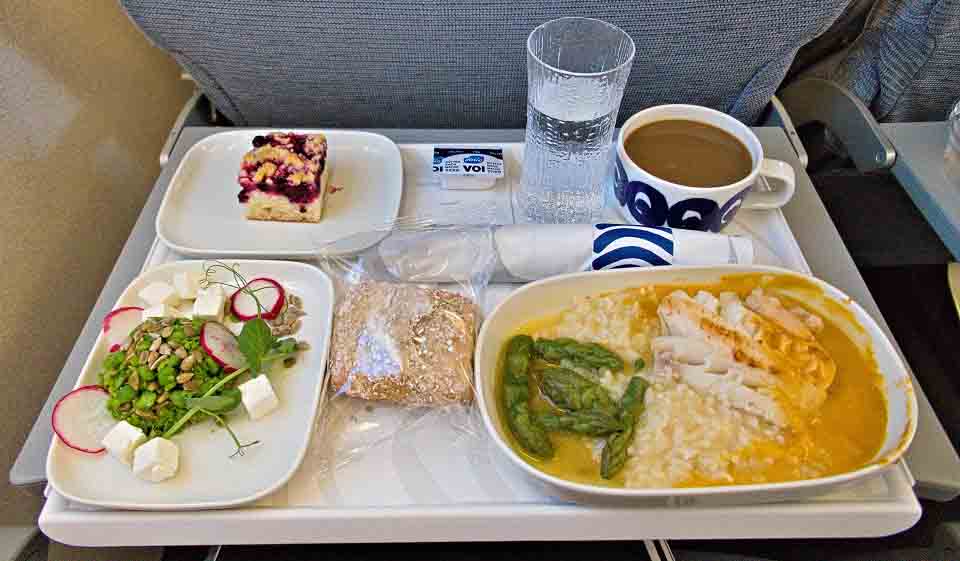Aviation
Does airline food have more salt? Here is the answer.

Whenever you fly with an airline, you often notice that the taste of the food is different from what you’re accustomed to on the ground. While passengers sometimes prioritize the food experience, have you ever wondered why airline food tends to be saltier? Let’s delve into this in the video.
Airline food has 15% more salt
One of the main challenges for chefs crafting meals served on airplanes is ensuring they are flavorful for passengers. To achieve this, chefs typically add more salt and seasoning, roughly 15% more salt is used, given that our taste buds are less sensitive by about 30% when we’re airborne.
The Role of Sodium: Sodium is a key ingredient used to enhance flavor, especially in the air where our senses can be dulled. On average, airline meals contain over 800mg of sodium, exceeding 40% of the daily limit recommended by the World Health Organization.
Altitude Alters Perception
Flavors are perceived differently at higher altitudes due to the dry cabin air and low humidity levels, which can diminish our ability to taste and smell. To compensate, airline chefs amp up the salt and seasoning to elevate the food’s taste.
Airline’s food Preservation:
Airline meals are prepared in advance and stored, necessitating longer preservation times. Salt serves as a natural preservative, ensuring the food maintains its quality and safety during storage and transportation.
However, excessive salt intake can pose health risks such as high blood pressure and dehydration, particularly problematic during air travel. Therefore, it’s crucial for airlines to strike a balance between flavor enhancement and maintaining a healthy sodium level in their meals.
An Indian content creator and food analyst discovered that the Indian-based carrier, IndiGo Airlines, incorporates higher levels of salt into its meals compared to standard food practices. According to him, “Many of us are aware that Maggi is high in sodium! What most don’t realize is that IndiGo’s Magic Upma contains 50% more sodium than Maggi, IndiGo’s Poha boasts approximately 83% more sodium than Maggi, and even Daal Chawal matches Maggi’s sodium content.”

Aviation
Boeing, Antonov to Collaborate on Defense Projects

– MOU represents Boeing’s commitment to work with Ukrainian industry
– Includes exploring opportunities for collaborating on in-country support of Unmanned Aerial Systems
A Memorandum of Understanding was signed today by Boeing and Antonov Company to investigate potential collaboration on defense-related projects.
“We’re happy to keep collaborating with the Antonov Company to help Ukraine’s economic development and expansion,” stated Ted Colbert, CEO and president of Boeing Defence, Space, & Security.
Airbus and the Antonov An-225: The Best Partnership:Click here
“This agreement demonstrates our ongoing efforts to find more opportunities to work with Ukrainian industry, which was underscored by our signing of the Ukrainian Defence Industry Compact earlier this year.”
The areas of potential collaboration identified in the agreement consist of training, logistical support and overhaul services for tactical Unmanned Aerial Systems utilized by the Ukrainian Armed Forces, which includes the ScanEagle. In addition, the companies will also explore opportunities for Antonov to provide engineering support to Boeing.
The six largest cargo aircraft ever built in the aviation industry:Click here
“A strong, innovative, and efficient defense industry is key to sustainable economic development and national security, and we are extremely excited to collaborate with Boeing,” said Ievhen Gavrylov, CEO of Antonov Company.
This agreement brings a whole new level of opportunity to implement the latest and most effective solutions – in addition to the possibility of future projects with Boeing in the aerospace and defense industry.”
-

 Travel1 week ago
Travel1 week agoAir India to Expand US Operations with Three New Routes After a Decade
-

 Travel2 weeks ago
Travel2 weeks agoWhy We Should Avoid These Stamps in a Passport
-

 Airlines1 month ago
Airlines1 month agoInvestigations Reveal Fake Chinese Titanium in Boeing and Airbus Jets
-

 Tech4 weeks ago
Tech4 weeks agoChina’s CATL Plans 1,800-Mile Electric Plane Launch by 2027
-

 Airport3 days ago
Airport3 days agoTop 10 Largest Airports in the World by Size
-

 Aerospace4 weeks ago
Aerospace4 weeks agoChina’s Fighter Jets Turn Wings into Autonomous Drones
-

 Airlines4 days ago
Airlines4 days agoAir India Rolls Out A350s for Delhi-New York JFK and Newark Routes
-

 Defence3 weeks ago
Defence3 weeks agoBoeing Enhances Chinook with New Engines and Block II Upgrades at $96 Million







